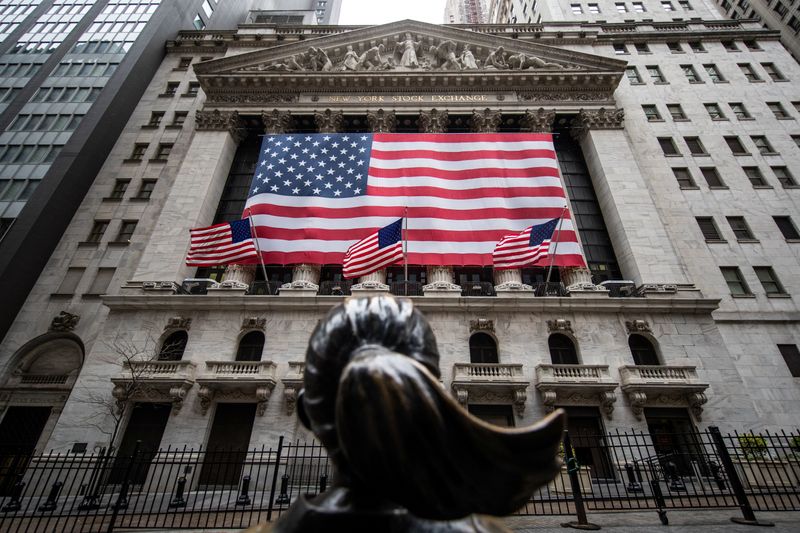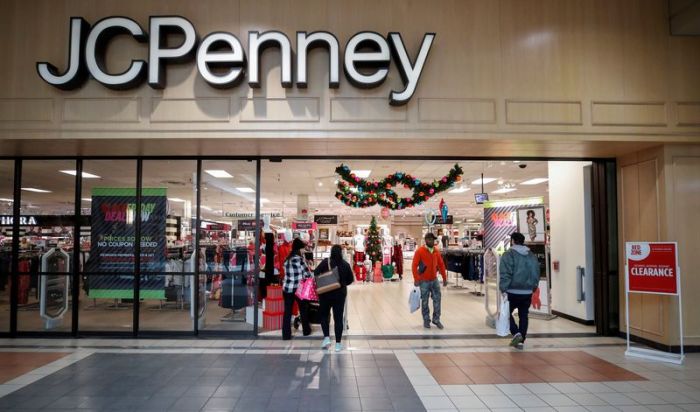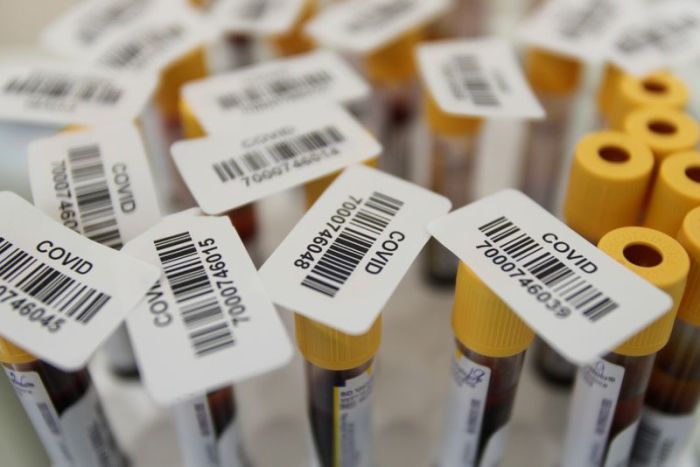NEW YORK (Reuters) – Wall Street’s three major indexes closed higher after swinging between gains and losses on Friday as investors weighed worries about Sino-U.S. trade relations and weaker-than-expected U.S. economic data against growing optimism that easing coronavirus restrictions would boost activity this month.
Economic data painted a grim picture on Friday as U.S. retail sales and manufacturing output showed record declines in April due to virus-related stay-at-home orders.
The data came after U.S. President Donald Trump ratcheted up trade tensions with China by moving to block semiconductor shipments to China’s Huawei Technologies from global chipmakers. The trade worries sent the Philadelphia Semiconductor index <.SOX> down more than 2%.
China was swift to respond with a report saying it was ready to put U.S. companies on an “unreliable entity list,” according to the Global Times.
The combination of trade tensions and weak data had sent S&P 500 down around 1.3% earlier in the session but for much of the afternoon session it oscillated between positive and negative territory.
“We got the Friday jitters on China trade but late this afternoon the market turned its focus on reopenings,” said John Augustine, chief investment officer at Huntington National Bank in Columbus, Ohio.
“We’re smack in the middle of May and think this might be the worst of the economic numbers. There’s a chance they start to slowly turn positive,” said Augustine citing moves by most states to at least partially reopen their economies.
The Dow Jones Industrial Average <.DJI> rose 60.08 points, or 0.25%, to 23,685.42, the S&P 500 <.SPX> gained 11.2 points, or 0.39%, to 2,863.7 and the Nasdaq Composite <.IXIC> added 70.84 points, or 0.79%, to 9,014.56.
However, for the week S&P 500 fell 2.3%, for its biggest weekly drop since the week of March 20. The Dow dropped 2.7% for the week while the Nasdaq declined 1.2%, marking their biggest weekly drops since the week ended April 3.
Six of the 11 major S&P sectors closed higher, led by a 1.3% gain in communications services <.SPLRCL>. Utilities <.SPLRCU> was the weakest with a 1.4% drop followed by a 0.7% drop in financial stocks <.SPSY>.
“Today has very much been about this battle of conflicting factors,” said Ed Perks, multi-asset solutions’ chief investment officer at Franklin Templeton, adding that without “something that’s going to give us direction” investors are viewing it as a lackluster Friday after a long week.
The small-cap Russell 2000 <.RUT> outperformed, with a 1.6% gain. One of its stocks, Sorrento Therapeutics Inc <SRNE.O>, closed 158% higher after its experimental antibody candidate showed potential in blocking COVID-19 infections in early studies.
Advancing issues outnumbered declining ones on the NYSE by a 1.41-to-1 ratio; on Nasdaq, a 1.69-to-1 ratio favored advancers.
The S&P 500 posted nine new 52-week highs and no new lows; the Nasdaq Composite recorded 51 new highs and 16 new lows.
Volume on U.S. exchanges was 11.36 billion shares, compared to the 11.39 billion average for the last 20 trading days.
(Additional reporting by Ambar Warrick and Medha Singh in Bengaluru; Editing by Shounak Dasgupta and Cynthia Osterman)

























